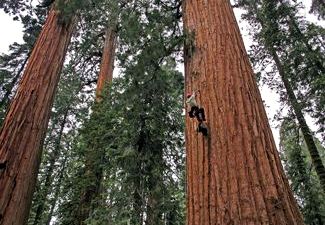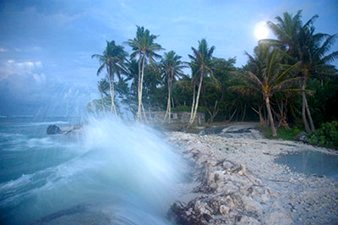 San Francisco, California – Save the Redwoods League, along with a team of renowned scientists, announced on August 14 the initial findings from a multi-year study aimed at predicting how rapid global climate change will affect redwoods in old-growth forests over time.
San Francisco, California – Save the Redwoods League, along with a team of renowned scientists, announced on August 14 the initial findings from a multi-year study aimed at predicting how rapid global climate change will affect redwoods in old-growth forests over time.
Following are the top three findings from the study:
- Researchers find ancient redwood forests can store up to 3 times more carbon above ground than non-redwood forests worldwide
- Changing environmental conditions have triggered a growth surge in coast redwoods and giant sequoias
- California summers have warmed, but precipitation has remained highly variable and not decreased over recent decades
Scientists also developed a new tree ring record from ancient redwoods throughout California to support the study of how redwoods have been affected by severe droughts, fires and flooding in the past centuries.
The study, called the Redwoods and Climate Change Initiative (RCCI), is a collaborative research program that began in 2009. It is led by Save the Redwoods League and top scientific researchers from UC Berkeley, Humboldt State University, the Marine Conservation Institute and other organizations to study past, present and future impacts of climate change on coast redwoods and giant sequoia forests. Save the Redwoods League is the only non-profit organization dedicated to protecting ancient redwood forests throughout their natural range.
“These results bolster our mission to protect redwoods because these trees are pulling incomparable amounts of carbon dioxide out of the atmosphere which helps combat global warming,” said Emily Burns, Director of Science for Save the Redwoods League. “We have found ancient forests where climate conditions are accelerating growth and we predict these places will stay vibrant habitat refuges for other plants and animals in the foreseeable future.”
“There’s no question that our climate is changing. With this research, we have laid the foundation for understanding how we can be responsible caretakers for these magnificent forests in the years ahead,” said Harry Pollack, Chief Operating Officer for Save the Redwoods League. “We started this study because we can’t afford to wait. With only five percent of the world’s ancient redwood forests left, Save the Redwoods League needs to continue to lead conservation work as we’ve done for 95 years.”
Save the Redwoods League announced the first round of study results on August 14, 2013, during a day-long symposium at The David Brower Center in Berkeley by the top researchers involved in the study. These included Stephen Sillett, Allyson Carroll and Robert Van Pelt from Humboldt State University; Todd Dawson and Anthony Ambrose from UC Berkeley; and Healy Hamilton from the Marine Conservation Institute and Sound Science, LLC.
Summary of Key Findings Presented on August 14, 2013
- Northern old-growth coast redwood forests retain significantly more wood above ground than any other forest in the world. Redwood forests are carbon storage champions and critical parts of the climate change solution. (Source: Robert Van Pelt and colleagues)
- California summers are warming, but rainfall has not significantly changed during recent decades. Researchers predict the northern part of the coast redwood range is likely to be the place where the fewest climate changes occur in the redwood region over the next century and may be the best refuge for coast redwoods and the plants and animals that depend on these giants. (Source: Healy Hamilton and colleagues)
- Changing environmental conditions are triggering a growth spurt in coast redwoods and giant sequoias. Coast redwoods in a few Northern California old-growth forests produced more wood since the 1970s than ever before in their millennial life-spans. (Source: Stephen Sillett and colleagues)
- Redwood height growth slows with age, but redwood volume growth increases, meaning older redwoods produce more wood every year than younger redwoods. (Source: Stephen Sillett and colleagues)
- Seedlings of both redwood species only tolerate dry soil during drought until the water content drops below 15%. Seed source location did not impact seedling drought response, indicating that redwood progeny from drier native climates have no advantage over progeny from wetter regions. (Source: Anthony Ambrose and colleagues)
- Researchers created the most comprehensive chronology for coast redwoods available today using samples from 78 trees and tree rings that span the years 328 to 2012 CE. In addition, they added to the giant sequoia chronology by analyzing tree rings that span the years 474 to 2012 CE from 44 separate giant sequoia trees. These tree ring records hold the answers to how redwoods throughout California were affected by severe droughts, fires and flooding in the past centuries. (Source: Allyson Carroll and colleagues)
- Researchers found chemical signals within tree rings that reveal what type of climate factors influence wood production in redwoods. They found that warm and dry climatic conditions cause redwoods to conserve water which limits photosynthesis. (Source: Todd Dawson and colleagues)


















